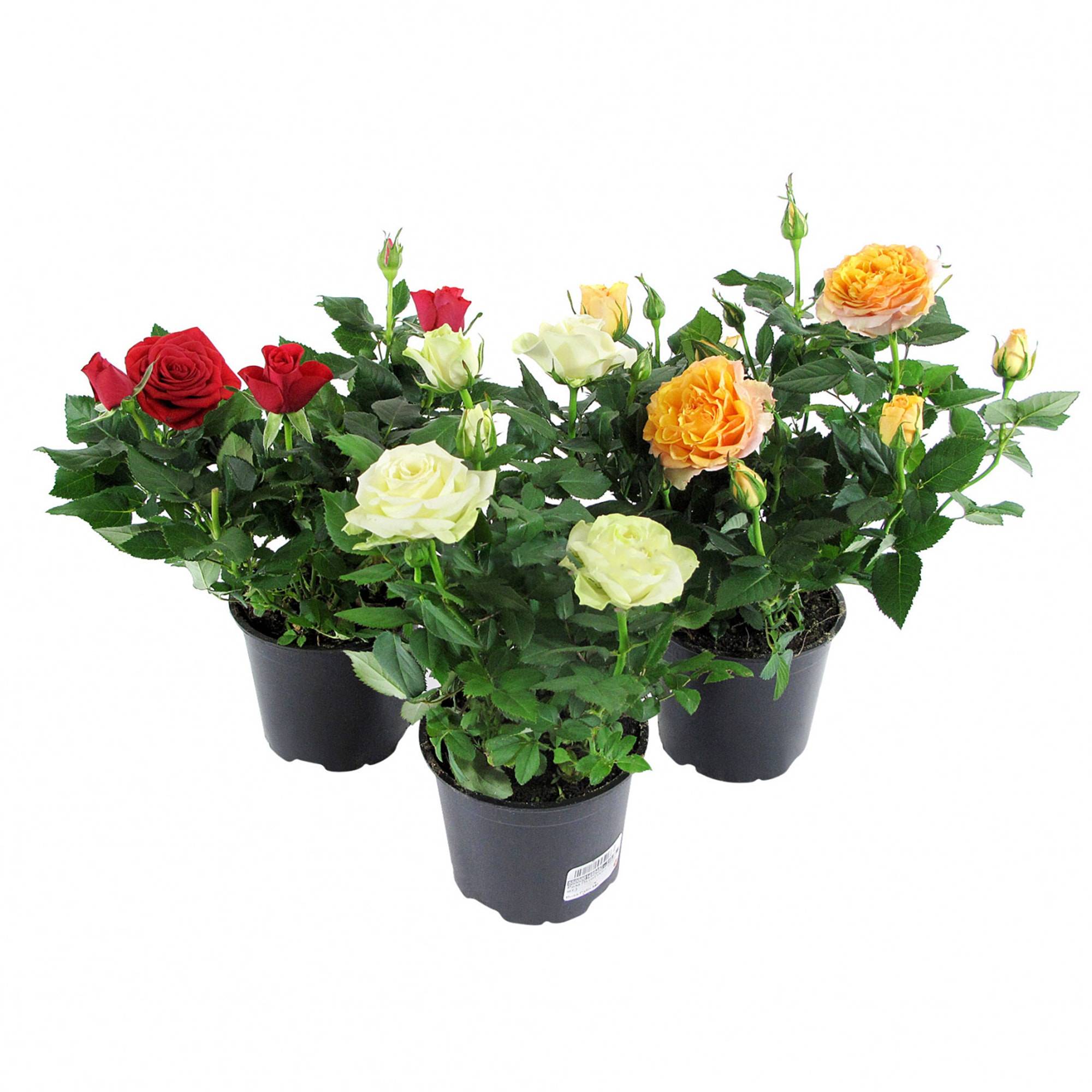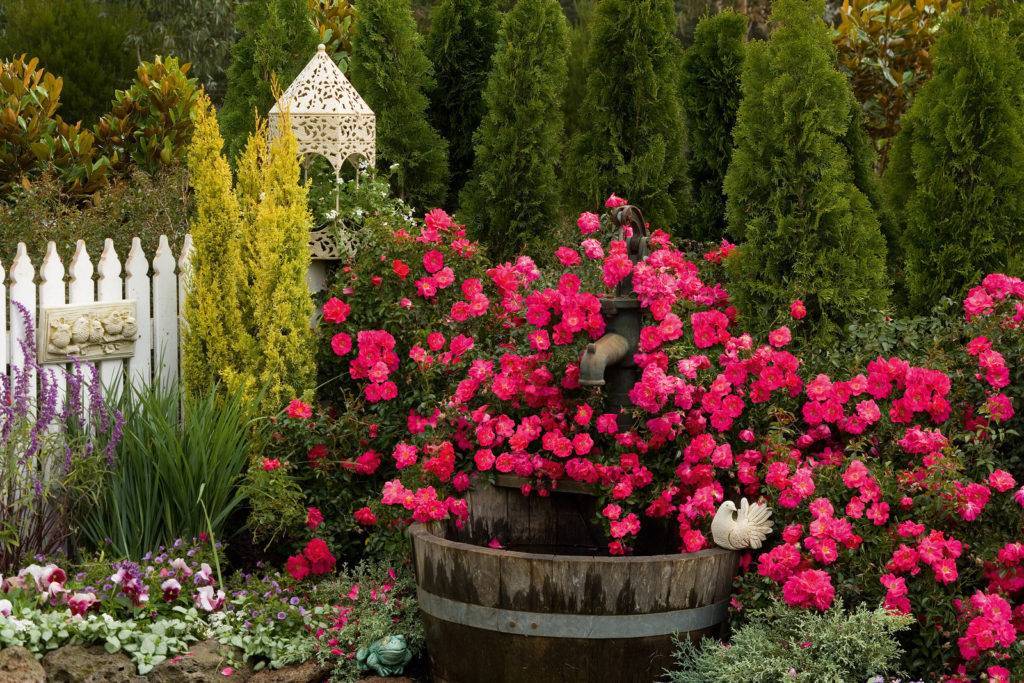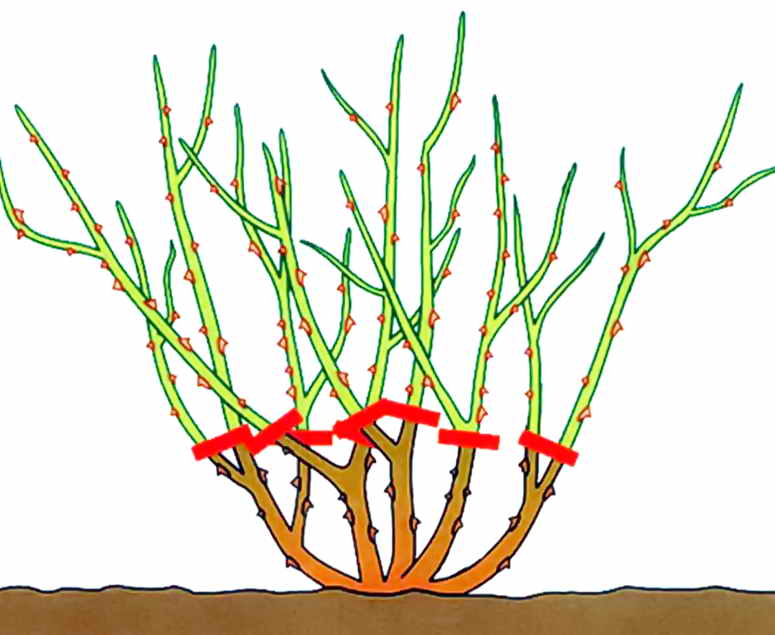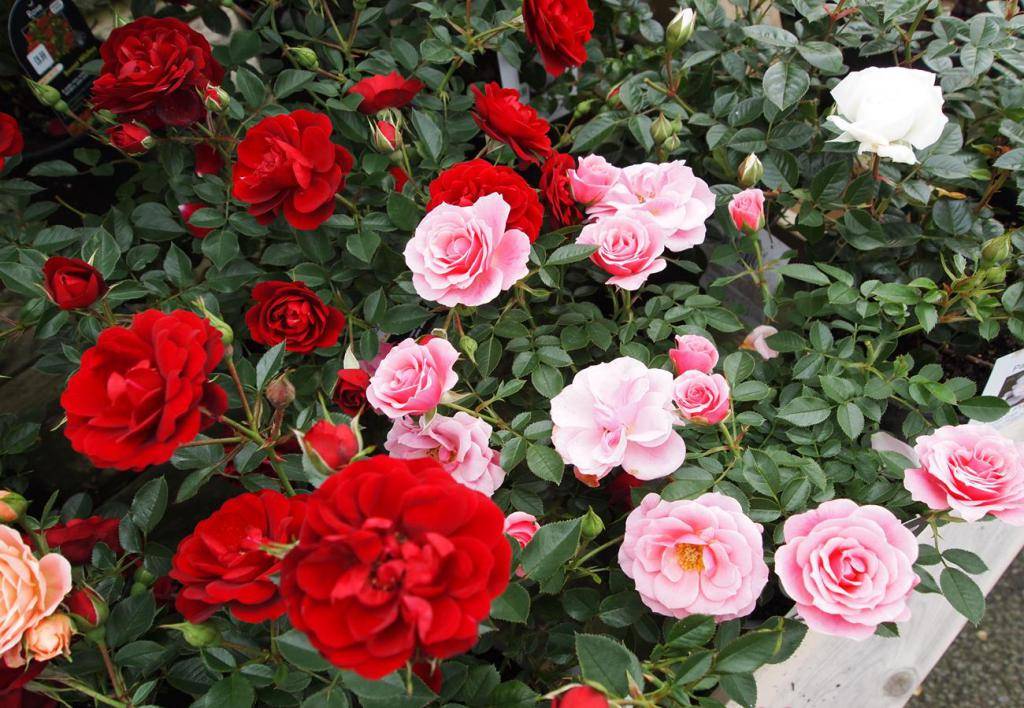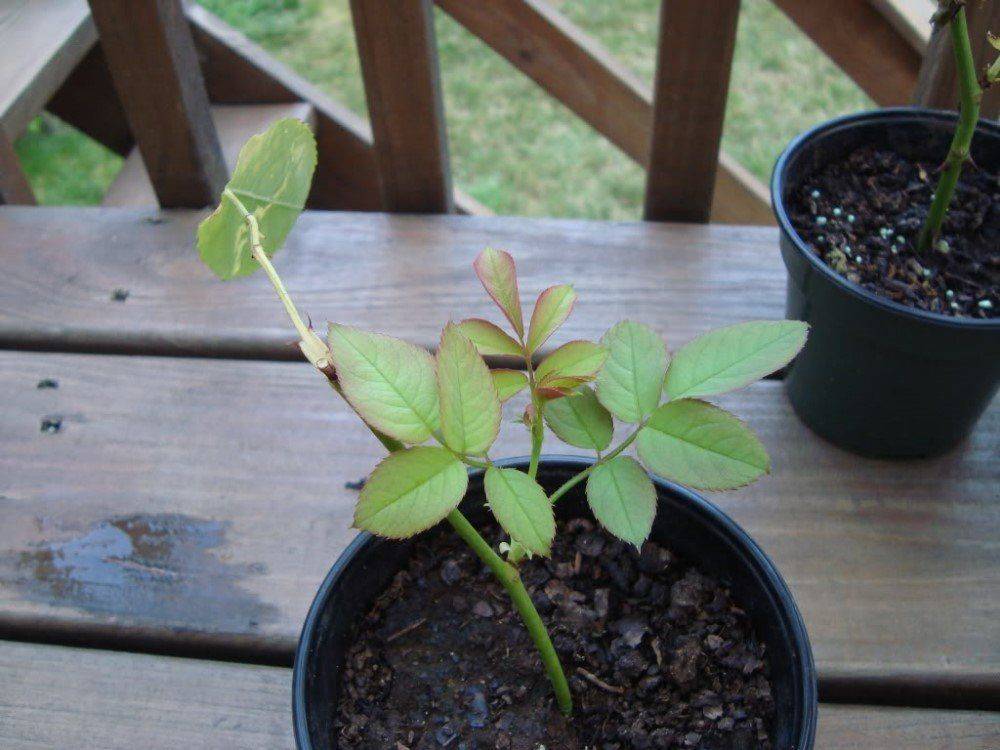Rose Patio - what is this variety
Content:
- Roses Patio - what is this group of flowers, what family does it belong to?
- Varieties of indoor plants with names, what they look like
- How to care for flowers at home
- Is it possible to plant patio roses in open ground
- How the patio rose blooms
- Flower reproduction methods
- Growing problems, diseases and pests
The primacy of the rose among other garden flowers is beyond doubt. The queen of flowers is a symbol of the most significant romantic phenomena. True, how beautiful she is, she is also capricious. Bouquets cost very little. Therefore, patio roses in pots are becoming more popular every day.
Roses Patio - what is this group of flowers, what family does it belong to?
Before the advent of the Patio, breeders carried out a number of experiments on crossing different species of the Rosaceae family. First, in the middle of the last century, floribunda roses were bred. Scientists have ensured that the buds of the culture bloom in inflorescences. A group of miniature varieties was found in the new species.
Until 1980, the dwarfs did not have their own name. Only later they were called “patio” (courtyard). That is, they were suitable for decorating small patios.
Short description, history of origin
Indoor rose Patio compact. Her height does not exceed 55 cm. The buds are medium-sized. The colors are very different. There are varieties with aroma, there are also odorless ones. Plants are demanding on temperature conditions. They can't stand the heat. Outdoor patio pots is recommended in summer. It is only necessary to provide lace shade and protect from strong winds.
Application in landscape design
The convenience of potted plants is that they can be rearranged to any place. In the case of the Patio, this is used quite widely. A flowering bush can be placed deep into the flower garden as a central figure, or to fill bald spots after primroses.
Indoors, favorite dwarfs are suitable for interior decoration. They are good even when cut. They last much longer than Flibust's roses.
Varieties of indoor plants with names, what they look like
There are a lot of varieties of Patio roses (about 2000). Patio mix roses are especially in demand by gardeners. But among the favorites are the following varieties:
- Korsnoda;
- Milky Way;
- Rose spray Macarena;
- Pink Flash;
- Typhoon.
Korsnoda
The bush grows to almost half a meter. Abundant flowering. The variety is distinguished by the shape of the flower when fully opened - the petals are bent down. The white buds themselves are about 7 cm in diameter. Korsnoda is used to create flower arrangements.
Milky Way
The height of the representative of the variety is slightly more than 50 cm. Repetitive flowering is inherent in it. Buds up to 8 cm in diameter are resistant to raindrops. Average frost and disease resistance. The flowers exude a faint, sweet scent.
Rose spray Macarena
Red Macarena variety is distinguished by double flowers of pure burgundy color.The bushes are compact, no higher than 50 cm.
Pink Flash
Pink Flash is optimal for container growing. Multilayer bicolor petals. Depending on the weather, the shade of the bud changes from pearl pink to cyclaminic. Subject to the rules of maintenance, it is resistant to diseases. It has a very beautiful emerald green foliage.
Typhoon
This rose is prized for the color of the bud. Its fiery red petals turn pink towards the ends. All this resembles tongues of fire. In combination with the dense green foliage, this looks especially mesmerizing. Fragrant buds, stay on the stem for a long time. Long flowering.
Patio hit
Another queen of flowers is the patiohit rose, caring for it at home is no different from caring for other varieties of culture. This is one of the new Patio hybrids, with the positive qualities of many previously created.
It is distinguished by the following features:
- the maximum bush height for dwarfs, up to 55 cm;
- dense and flexible stems with good branching;
- very dense dark green foliage;
- re-flowering all season.
How to care for flowers at home
Caring for a home rose is to follow the rules for growing this crop.
If you water, feed, take preventive measures against pests and diseases on time, the rose will grow and delight with lush flowering for many years.
Illumination and temperature conditions
Roses are light-requiring. Almost without harm to decorativeness, they can grow in the sun. True, in the summer they should be shaded at least at noon. In winter, she needs light, as in summer. With a lack of lighting, the bush can be supplemented with a phytolamp.
When it comes to temperature, roses are more likely to prefer coolness. In winter, you can even move the pot to the coldest place in the room.
Watering rules and humidity
Roses are very demanding on moisture. In summer, adult plants need to be watered at least once a week, and young ones more often. Watering should be abundant, but the water should be drained from the sump.
The decorative effect of the bush will only benefit with regular spraying.
Since the end of August, watering has been reduced, and almost stops with the onset of a dormant period.
Top dressing and soil quality
To feed the home rose, a universal fertilizer for flowering plants is used. During the growing season, it is enough to fertilize once a week. It is advisable to combine top dressing with watering.
Flower container size
Each transplant is carried out in a container larger than the previous one. There must be drainage holes at the bottom of the pot. The first layer is filled with drainage (expanded clay, pebbles), then a small layer of soil and the plant is planted. It is not recommended to break the earth lump.
Pruning and replanting
All indoor roses need pruning. It is held in the fall, after flowering. The stems are shortened by a third or more. The main thing is that at least 5 eyes remain on them. If you skip the autumn pruning, the flowering of the bush next spring will be scarce.
The newly acquired bush should be transplanted after it has faded. Transplant is allowed earlier. It all depends on the health of the flower.
The transplant is carried out by the transshipment method. It is better to use the soil purchased for roses. Further, within 3-5 years, an annual transplant is shown, with an increase in the size of the pot.
Is it possible to plant patio roses in open ground
Patio roses can be grown outdoors. With the right care, the bushes will look even better than in pots.
How and when is it done
In Central Russia, it is better to plant a home rose in the garden in the spring, after the retreat of return frosts.
Site selection and preparation of soil and plants
Roses grow well in slightly acidic or neutral soils. The landing site should be chosen taking into account the requirements of the culture, namely:
- deep bedding of groundwater;
- lack of drafts;
- illumination with sunlight in the morning and evening hours.
The latter is very important for the rapid evaporation of night dew, which is a prerequisite for the appearance of fungal infections.
How to care for a flower on the street
You need to plant homemade roses in the garden in spring, at a distance of 30-50 cm from each other.
Taking care of a street flower is no more difficult than a room flower. It also needs regular pruning, watering and feeding. Pruning is carried out before the start of sap flow. The formation of the crown is combined with sanitary cleaning. During the summer, faded buds and substandard shoots (weak, thin) are removed. Since the second half of August, pruning stops.
Features of wintering plants
Preparation for winter begins in late autumn. The step-by-step actions look like this:
- Free the bush from all damaged branches, cleanse of pests, cure diseases, and dispose of diseased scraps.
- The plant is highly mulched (peat, humus, sawdust, dry foliage, straw) and cover with any covering material. It does not hurt to overlay it with spruce branches, regularly sprinkle it with snow.
- With the onset of thaws, the bush is gradually freed from the shelter. It can be completely removed when the return frost stops.
How the patio rose blooms
Blossoming of the patio rose is long lasting. The first inflorescences bloom at the very beginning of summer. The return flowering continues until the end of October.
A period of activity and rest
As with all plants, the dormant period for indoor roses is winter. But depending on the time of acquiring a flowering bush, peace can also come in summer. Over time, periods of rest and activity return to normal.
In any case, after abundant flowering, the bush begins to shed dried buds and some of the foliage. It means that she needs to provide winter comfort, that is, rearrange it in a cool place, with a temperature not higher than +15 ° C
The period lasts approximately 6 months. At this time, watering is greatly reduced and feeding stops. Formative pruning is carried out. The stems are cut to a third of the length.
Types and shape of flowers
Patio buds can be plain, double or semi double. The flowers themselves are lush, with dense petals. Most often collected in inflorescences, but there are also single ones. For such a compact bush, they are quite large. The bud diameter can be up to 10 cm.
Flower reproduction methods
Varietal hybrids can only be bred from cuttings of the plant itself. Seeds do not guarantee the preservation of varietal qualities. For roses, this is the cultivation of a bush from cuttings or grafting on a rose hip.
Propagation by cuttings
Cutting is the main type of propagation of hybrids. With this method varietal qualities are preserved. Moreover, cuttings can be combined with pruning.
The strongest segments, with 4-6 buds, should be treated with a root stimulator (Kornevin, Epin) and placed in water. For disinfection, an activated carbon tablet is added to the water.
When roots appear (after 2-3 weeks), the seedling is planted in an individual pot.
Reproduction by grafting a shoot on a rosehip
Of the Rosaceae family, the dog rose is the most resistant to external manifestations. Therefore, it is often used as a stock for varietal roses. For this, rosehip seedlings are grown from seeds and cuttings of a rose of the desired variety are grafted onto them.
Growing problems, diseases and pests
Powdery mildew is the most dangerous disease for Patio. The defeat can be understood by the white bloom on the leaves and shoots. Powdery mildew can be dealt with with fungicides such as Topaz, Fundazol.
Roses are also very attractive to pests such as aphids and spider mites. If you do not take action, the rose may completely disappear. It will also infect neighboring plants.
Various insecticides are used from aphids: Iskra, Aktara, Aktellik. Acaricides will help fight spider mites: Sunmite, Fitoverm, Fufanon.
Rose is a capricious flower. It is not always possible to keep track of her health. If you leave her without attention even for a short time, you can lose this fastidious beauty. But nature has not yet come up with a better decoration for the garden and home.
